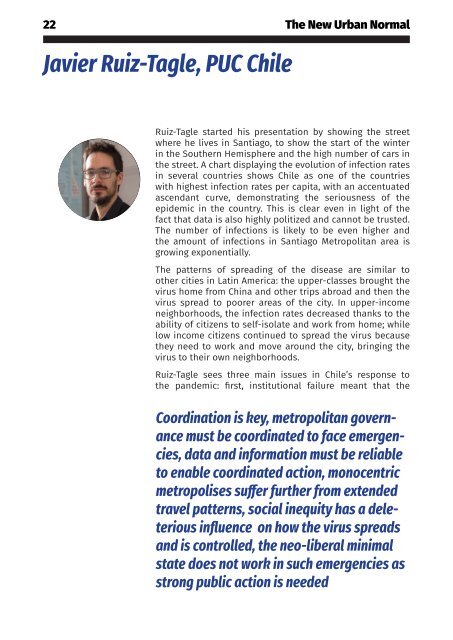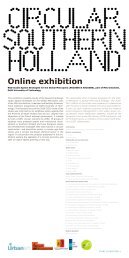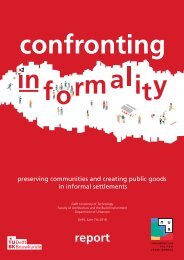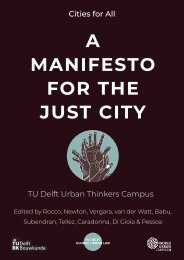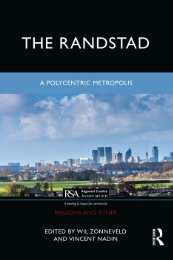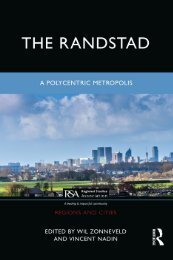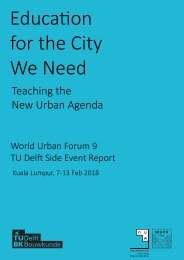The New Urban Normal Urban Sustainability and Resilience Post COVID-19
The COVID19 pandemic has exposed several systemic failures and injustices in the way cities are planned and designed around the world. It has also exposed the failings due to lack of planning in most places in the Global South. Careful, inclusive and participatory spatial planning is thought to greatly strengthen the capacity of societies to withstand systemic shocks, as testified by the New Urban Agenda (2016), the Pact of Amsterdam (2016) and the New Leipzig Charter (2020). Integrated affordable housing, for instance, has come to the top of the agenda once again, now propelled by the realisation that slum dwellers (a staggering 1 billion people around the world) and homeless people are particularly vulnerable to health crises and other societal shocks. The pandemic has been saluted as an opportunity to implement far-reaching transformation of our societies towards sustainability and justice, but little signs of systemic change have actually surfaced. For example, several cities around the world claim they will overhaul public space, take space from private cars, and invest more on green spaces, bicycle paths and quality public mobility. But little has been said about addressing the structural causes of inequality. The champions of the circular economy salute the pandemic as a new dawn for more human-centred capitalism, for the abandonment of exploitation and unfair distribution, and a world where workers can find decent housing, health, work and leisure. But what is actually happening on the ground?
The COVID19 pandemic has exposed several systemic
failures and injustices in the way cities are planned and
designed around the world. It has also exposed the failings
due to lack of planning in most places in the Global South.
Careful, inclusive and participatory spatial planning is
thought to greatly strengthen the capacity of societies to
withstand systemic shocks, as testified by the New Urban
Agenda (2016), the Pact of Amsterdam (2016) and the New
Leipzig Charter (2020). Integrated affordable housing, for
instance, has come to the top of the agenda once again,
now propelled by the realisation that slum dwellers (a
staggering 1 billion people around the world) and homeless
people are particularly vulnerable to health crises and
other societal shocks.
The pandemic has been saluted as an opportunity to
implement far-reaching transformation of our societies
towards sustainability and justice, but little signs of systemic
change have actually surfaced. For example, several cities
around the world claim they will overhaul public space,
take space from private cars, and invest more on green
spaces, bicycle paths and quality public mobility. But little
has been said about addressing the structural causes of
inequality. The champions of the circular economy salute
the pandemic as a new dawn for more human-centred
capitalism, for the abandonment of exploitation and unfair
distribution, and a world where workers can find decent
housing, health, work and leisure. But what is actually
happening on the ground?
Create successful ePaper yourself
Turn your PDF publications into a flip-book with our unique Google optimized e-Paper software.
22 <strong>The</strong> <strong>New</strong> <strong>Urban</strong> <strong>Normal</strong><br />
Javier Ruiz-Tagle, PUC Chile<br />
Ruiz-Tagle started his presentation by showing the street<br />
where he lives in Santiago, to show the start of the winter<br />
in the Southern Hemisphere <strong>and</strong> the high number of cars in<br />
the street. A chart displaying the evolution of infection rates<br />
in several countries shows Chile as one of the countries<br />
with highest infection rates per capita, with an accentuated<br />
ascendant curve, demonstrating the seriousness of the<br />
epidemic in the country. This is clear even in light of the<br />
fact that data is also highly politized <strong>and</strong> cannot be trusted.<br />
<strong>The</strong> number of infections is likely to be even higher <strong>and</strong><br />
the amount of infections in Santiago Metropolitan area is<br />
growing exponentially.<br />
<strong>The</strong> patterns of spreading of the disease are similar to<br />
other cities in Latin America: the upper-classes brought the<br />
virus home from China <strong>and</strong> other trips abroad <strong>and</strong> then the<br />
virus spread to poorer areas of the city. In upper-income<br />
neighborhoods, the infection rates decreased thanks to the<br />
ability of citizens to self-isolate <strong>and</strong> work from home; while<br />
low income citizens continued to spread the virus because<br />
they need to work <strong>and</strong> move around the city, bringing the<br />
virus to their own neighborhoods.<br />
Ruiz-Tagle sees three main issues in Chile’s response to<br />
the p<strong>and</strong>emic: first, institutional failure meant that the<br />
Coordination is key, metropolitan governance<br />
must be coordinated to face emergencies,<br />
data <strong>and</strong> information must be reliable<br />
to enable coordinated action, monocentric<br />
metropolises suffer further from extended<br />
travel patterns, social inequity has a deleterious<br />
influence on how the virus spreads<br />
<strong>and</strong> is controlled, the neo-liberal minimal<br />
state does not work in such emergencies as<br />
strong public action is needed


